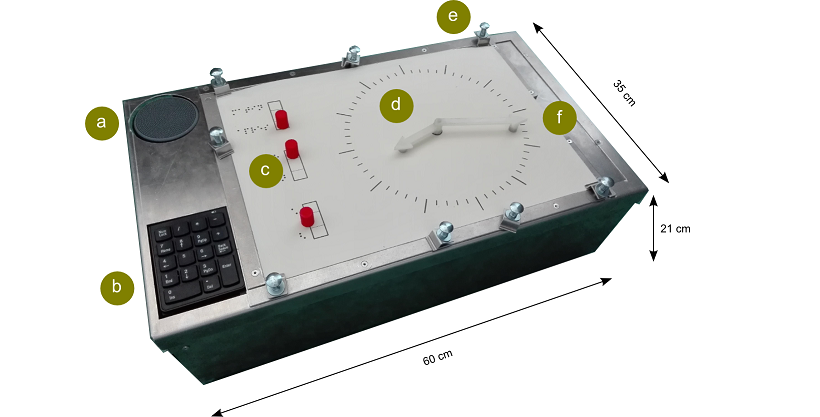The Tangible Box
The Tangible Box enhances tactile graphics with tangible interaction, making them interactive and reconfigurable. The first version was designed and developed during my PhD, together with Nicolas Biliote (internship), Bernard Oriola, Marc Macé, Christophe Jouffrais.
Since then, two other prototypes have been developed as part of the AccessiGraph project. It has also been used by Audrey Cabrolier to make a boardgame accessible in collaboration with AccessiJeux.
Videos
In short

The Tangible Box is a compact and low-cost tangible interface for visually impaired students. It enhances tactile graphics with tangible interaction, making them not only interactive, but also manipulable.
The Tangible Box can be used for a large variety of topics, such as maths, biology, geography, history, etc. It supports different types of learning-by-doing activities: (re)construction, exploration, annotation, edition. It can also be used with several types of tactile graphics, such as 3D-printed graphics, laser-cut wooden or plastic graphics, graphics printed on special paper (raised-line and thermoformed graphics), German film, and regular paper.
To ensure the stability of the objects and avoid occlusions, the objects are composed of two magnets : one is placed above the surface, the other below the surface. A tag is attached to this magnet to track its position. When the user moves the upper magnet, the magnet placed below moves accordingly.
A wide-angle camera is placed inside the box, along with a Raspberry and a LED string light, making the Tangible Box compact, low-cost and easy to install.